TTArtisan’s 500mm f/6.3 lens is a budget-friendly option for those seeking a long-range lens. It’s a full-frame manual focus telephoto lens available for mounts like Sony E, Nikon Z, Canon RF, and Leica L. Priced at about $329 in the official shop, it costs around €400 in Europe. However, it doesn’t have a direct Micro 4/3 mount and uses a fixed mount rather than a T mount for adaptable use. Reviews are mixed: while the image quality is generally good, the manual focus can be challenging, especially for photographers used to modern autofocus systems.
The TTArtisan 500mm f6.3 lens, if it was usable on a Micro 4/3 camera, gives a field of view equivalent to 1000mm on a 35mm format. For a similar reach with autofocus, the cheapest option is the Olympus 100-400mm lens with an MC-14 converter, reaching up to 560mm. This setup costs about €1650 (€1300 for the lens and €350 for the converter). The new OM System 150-600mm lens also works but costs at least €2500.
Why consider buying a manual telephoto lens? Price is a big factor, especially for beginners in bird and wildlife photography or those on a tight budget. Not everyone can spend a thousand or more euros, pounds, or dollars, and even €300 to €400 is a lot of money. Second-hand vintage 400mm, 500mm, or 600mm lenses are an option, but they often have downsides. For example, the Meyer Optik 500mm f/5.6 I had weighed nearly 3kg, and vintage lenses aren’t always cheap either. So, what are the alternatives ?
Well, there is one.
However, it may be a lens that raises the eyebrows of many photographers.
The Lightdow 500mm f/6.3 is cheaper and relatively lighter than its vintage counterparts. Priced at less than €150, including shipping and an adapter for any mount, it seems almost too good to be true.
I wanted a telephoto lens to leave at our vacation home to avoid carrying my expensive lenses back and forth. It would mostly be for occasional photos of birds and wildlife in our forest garden. Curious about its quality, I bought it from China for €135, all included. If it didn’t meet my expectations, I could resell it without much loss.
As far as I can find, this is the only review available for this specific lens.
If you find a review of the Lightdow 500mm f/6.3 with a T mount online, it’s probably a mirror lens. However, unless you get a high-quality mirror lens like the Sigma 600mm, there are better options available, including the one I’m reviewing.
So, the Lightdow Telephoto Lens 500mm f/6.3 with T2 mount.
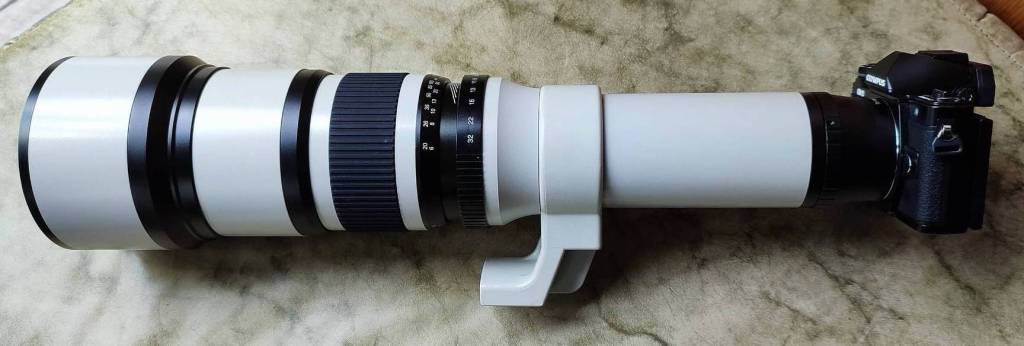
Specifications according to Lightdow :
- Focal Length: 500mm
- Maximum Aperture: f/6.3
- Minimum Aperture: f/32
- Angle of View: 5 degrees
- Format: Full Frame and APS-C
- Construction: 4 elements in 4 groups
- Aperture Blades: 8
- Minimum Focusing Distance: 9.8 feet (3m)
- Focus: Manual
- Filter Size: 86mm
- Dimensions: 4.5 x 17 inches (114mm x 432mm)
- Package Weight: 1.88 kg (55 oz)
What’s in the box :
- 1x 500mm F6.3-32 white version telephoto lens (available in white or black version)
- 1x front lens cap
- 1x T2 rear lens cap
- 1x carrying case
- 1x T2 lens adapter to micro 4/3 (any lens mount is available on site)
Unpacking :
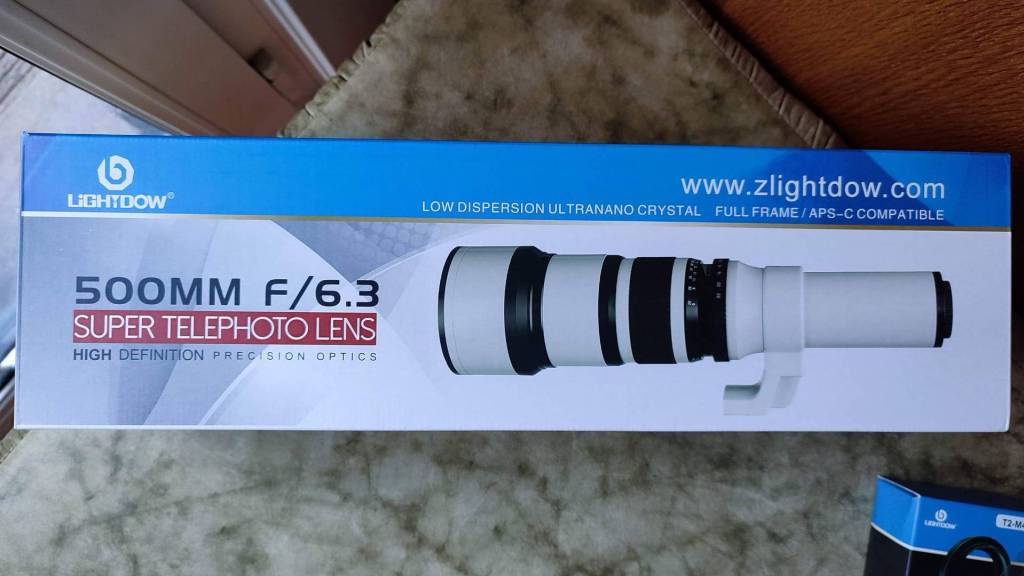
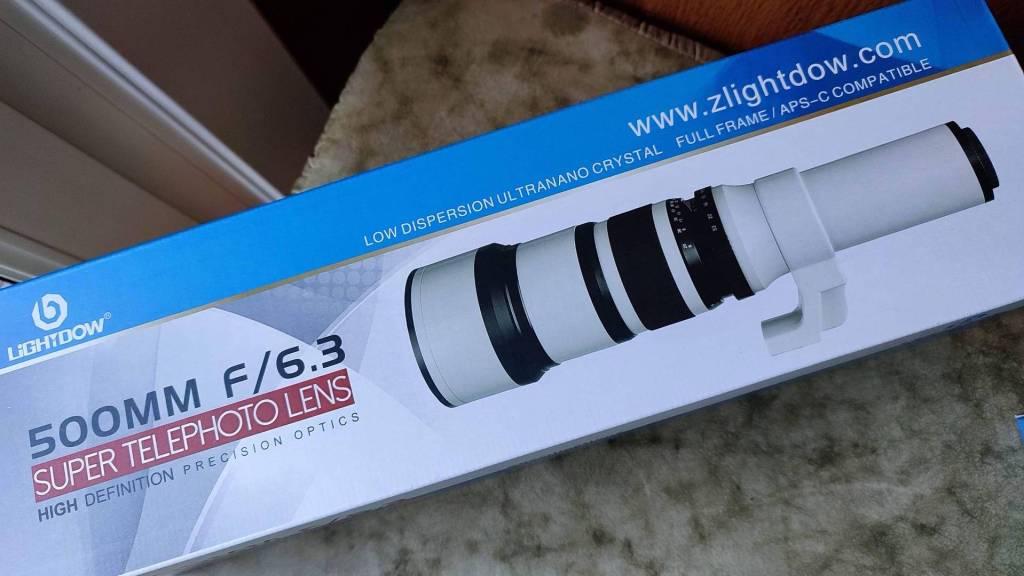
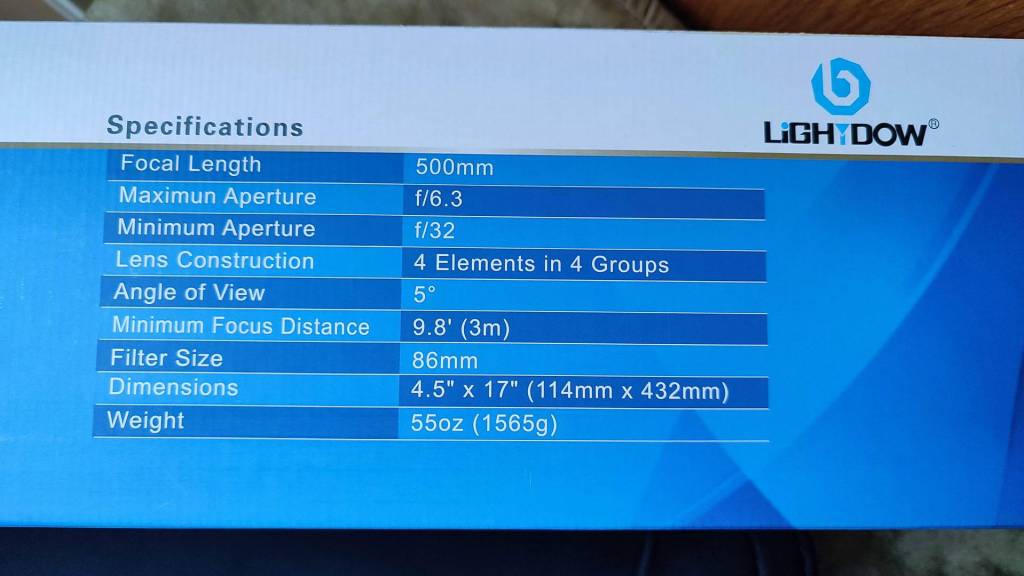
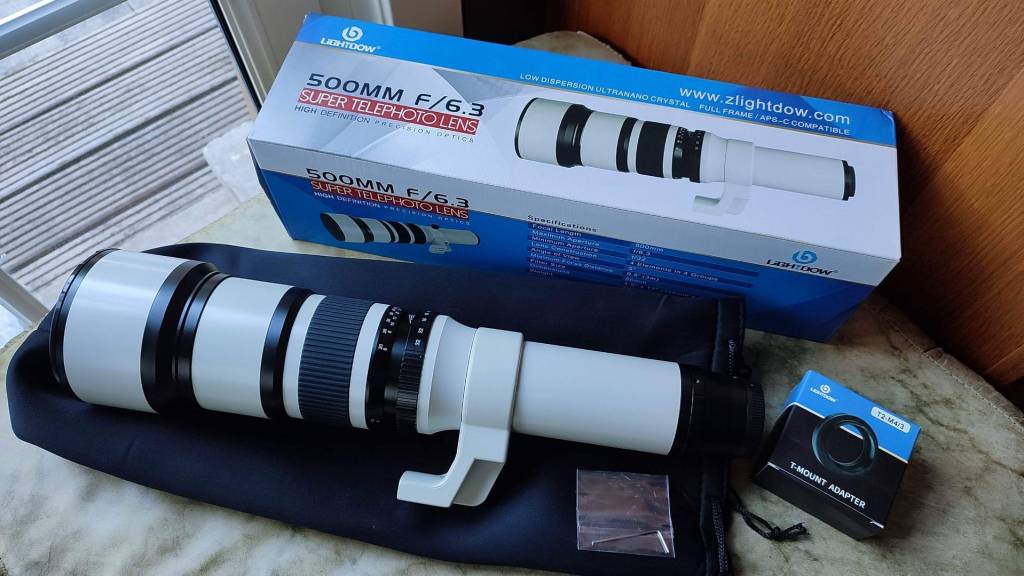
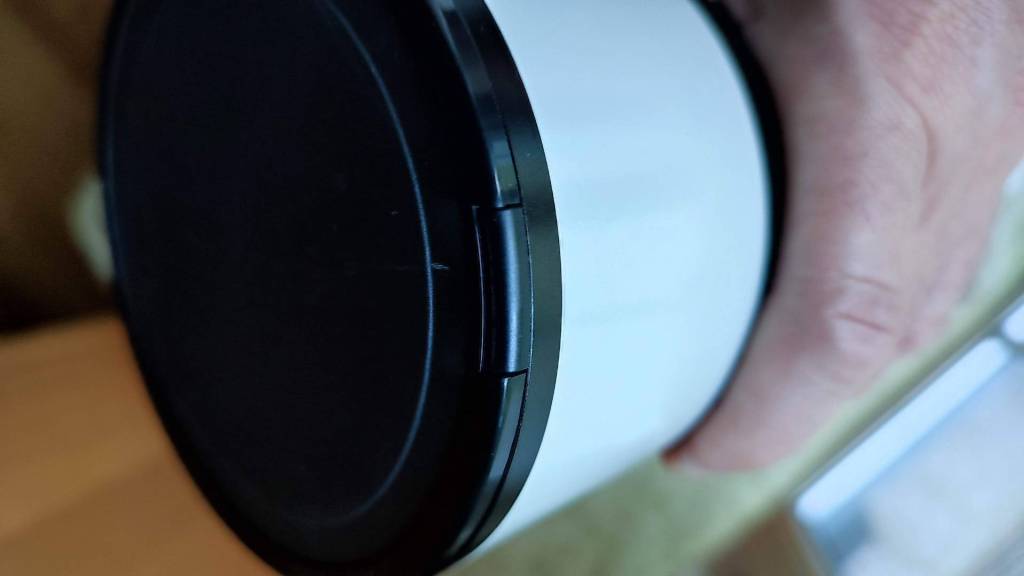
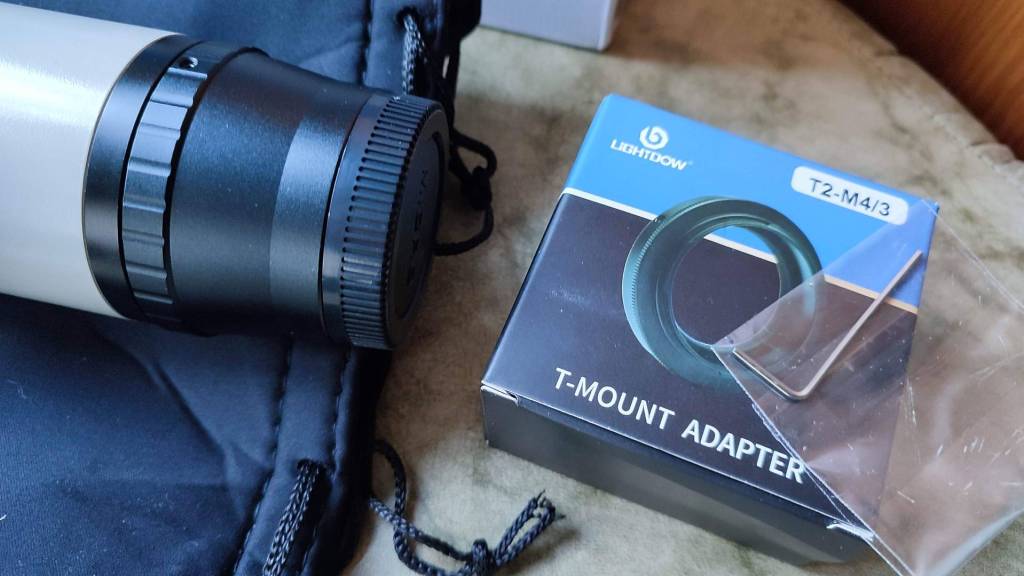
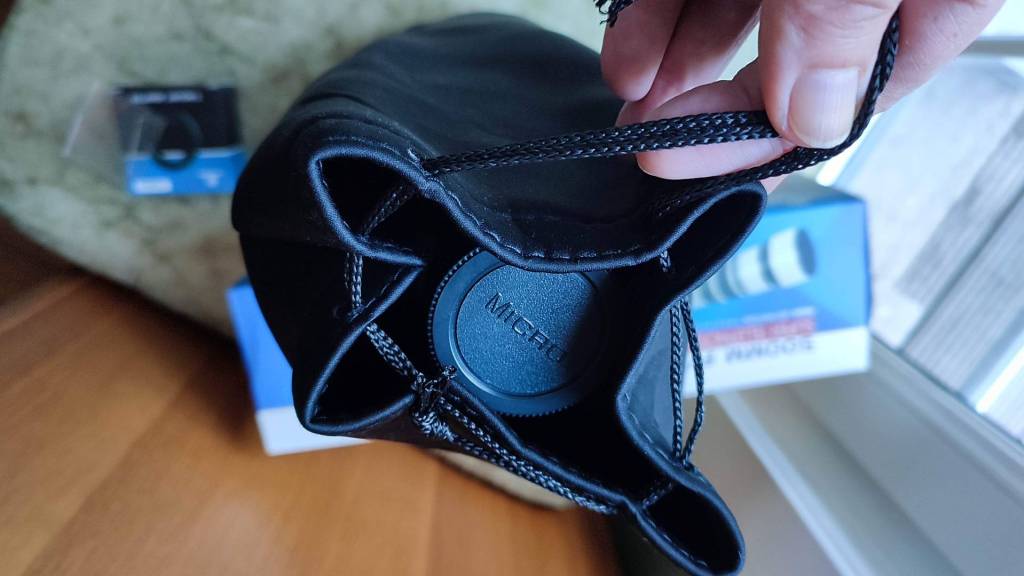
The lens arrived in a brown cardboard outer box, which contained the lens box and a T2 to Micro 4/3 adapter. The lens itself was in a separate clear plastic bag. Inside the box, there was also a large “soft shell” type lens pouch with a drawstring at the top. The pouch is big enough to carry the lens with the adapter attached. While the pouch material is not very thick and provides limited protection, it’s still a useful inclusion.
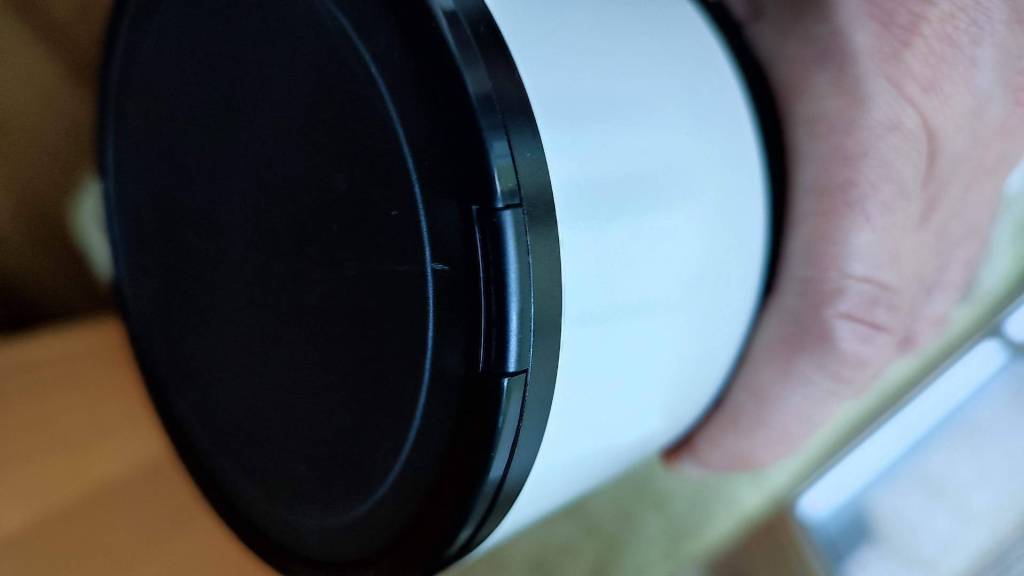
The lens has a front lens cap that is difficult to press and remove because the click buttons do not protrude. On the back, there is a T2 screw cap. If you want to leave the adapter attached, you will need an extra M4/3 rear cap. The adapter is by Lightdow; although there are better ones available, this one is satisfactory. An Allen key is included to adjust the adapter if the camera is not correctly positioned after mounting.
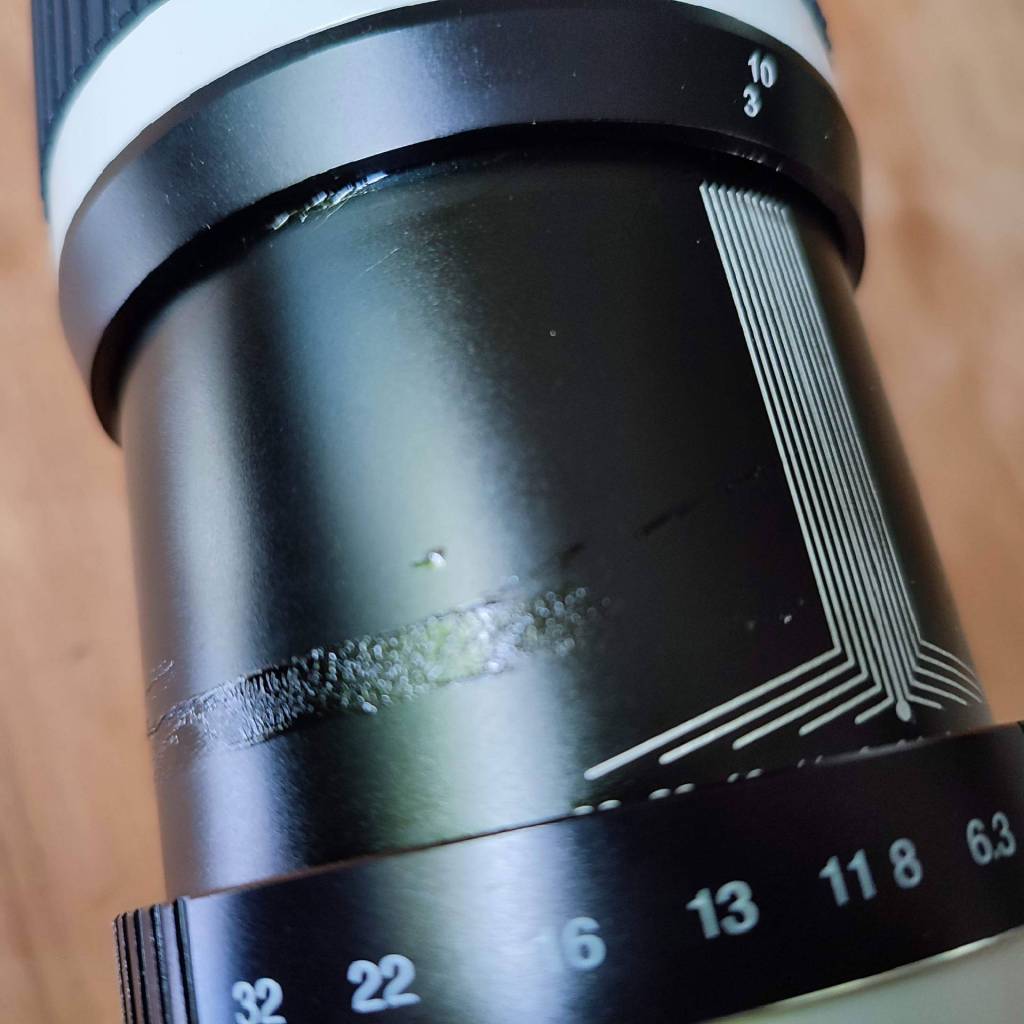
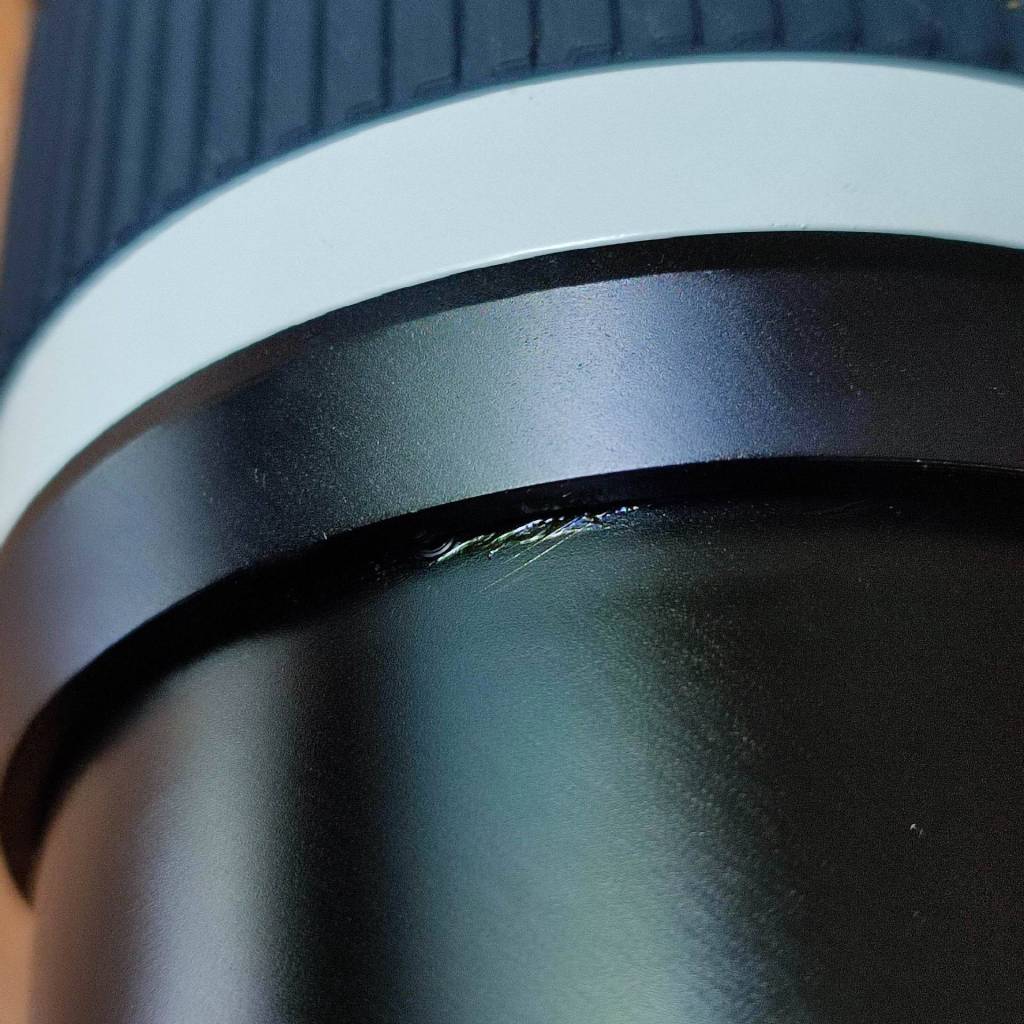
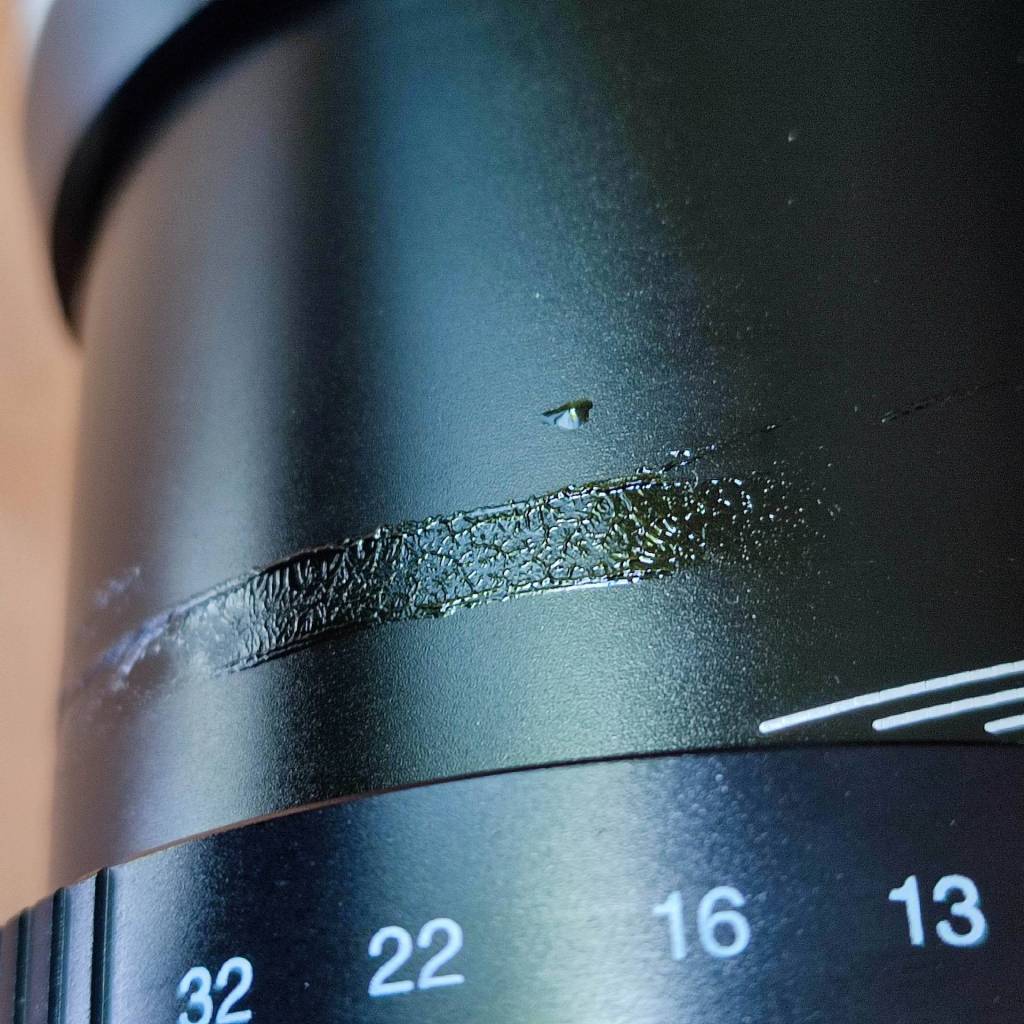
The focusing ring is the entire front tube, measuring 20 cm from the ring where the distance markings are printed. The focusing ring moves smoothly with just enough resistance. On my copy, I noticed a slight play of the front tube relative to the rest of the lens, but this was not bothersome—in fact, I didn’t even notice it at first. When focusing, you can hear the lens grease inside the lens tube, and I observed a bit of grease left on the black tube after repeated use. I regularly cleaned off the excess grease with a paper towel. After using it for a while, this problem will probably disappear
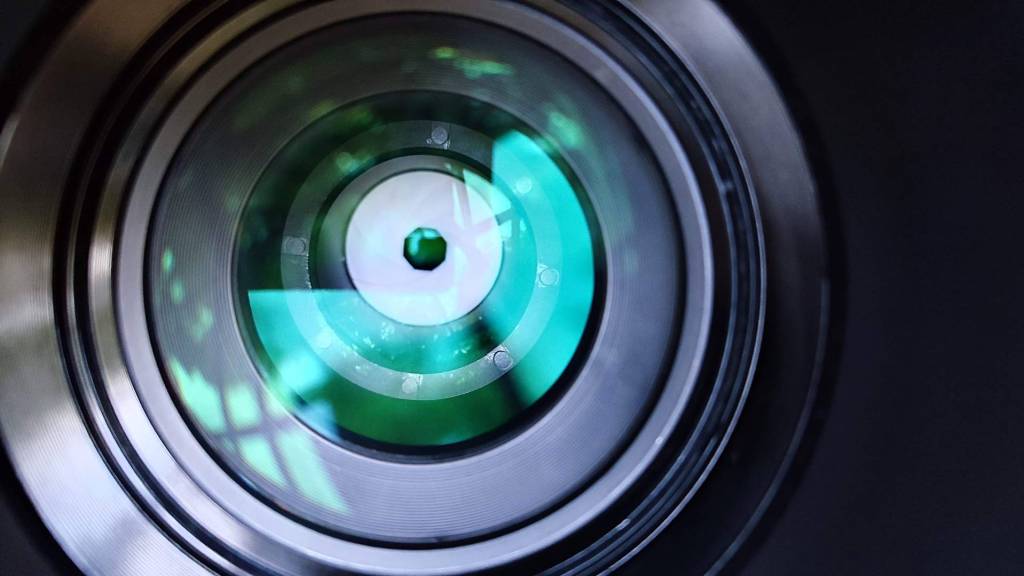
The aperture is clickless and sufficiently dampened, though I occasionally changed the aperture while focusing. This can be avoided by gripping the focus tube further forward.
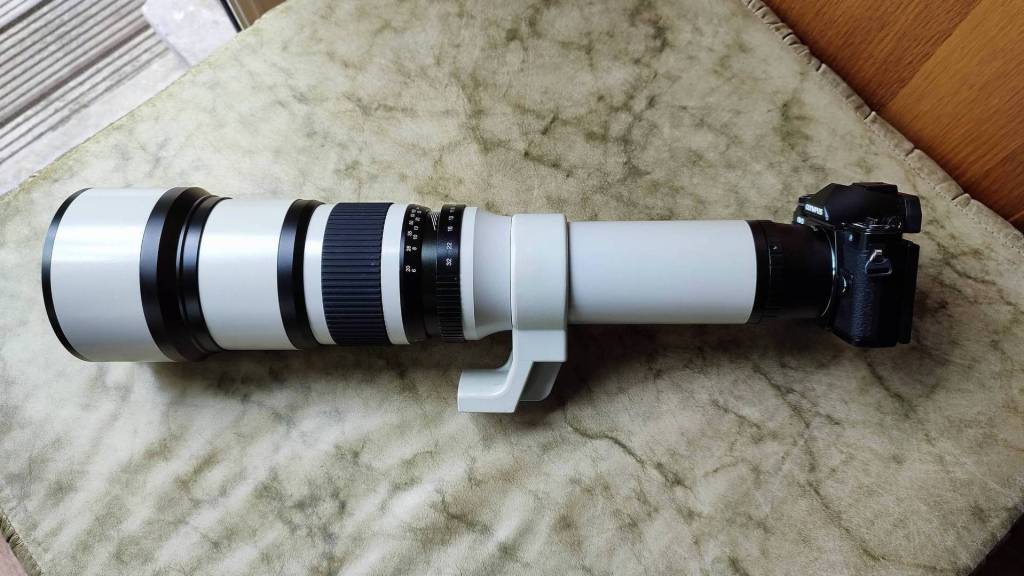
Most of the weight is in the front of the lens due to its larger diameter. On lighter cameras like the Olympus E-M10, E-M5, and OM-5, the lens feels unbalanced and tips forward. However, it balances well with heavier cameras like the E-M1X or OM-1.
The tripod collar is sturdy, but a longer foot would make handheld photography easier. When using lighter cameras and holding the lens by the collar, the balance is maintained.
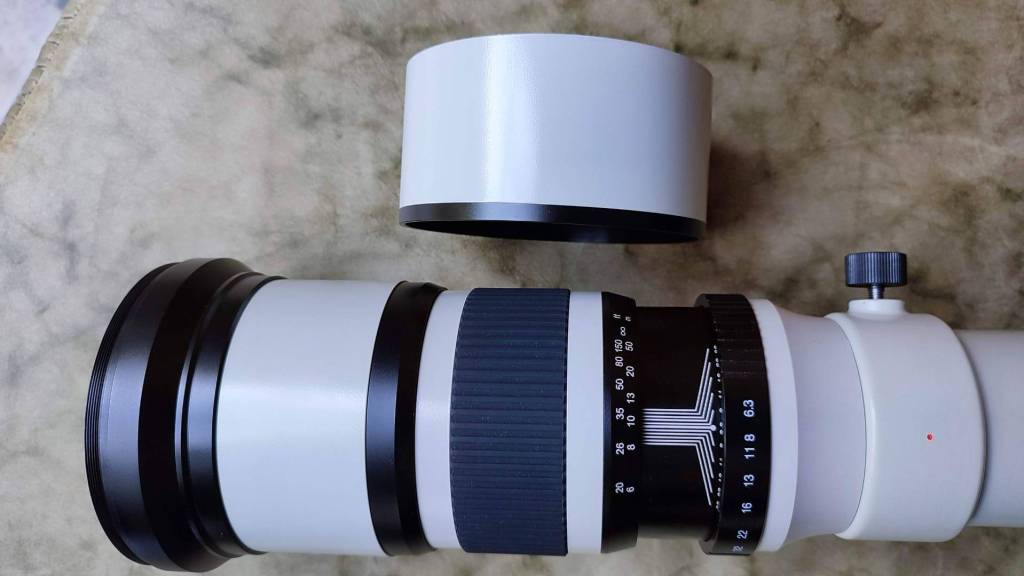
The lens has a built-in lens hood that I couldn’t remove. I could only take off the white front ring, leaving an angled black ring in place. Because of this, I couldn’t attach a filter to the 86mm thread, though filters that size are likely as expensive as the lens itself. The metal lens hood, which is almost permanently attached, offers good protection for the front lens. The lens is made entirely of metal and weighs 1325 grams with the adapter attached.
Review :
Well, to start with, I couldn’t resist testing it immediately after unpacking and assembling the adapter. I used the same chimney as a target that I had photographed in an earlier test, so you can compare the results. The photos were taken with an E-M10 MKII handheld with auto ISO, 1/1000 shutter speed, and an aperture of f/6.3. Below is a 100% screen capture in Rawtherapee, and below that, on the left is the photo with the standard Adobe camera color profile, and on the right is the sharpened and noise-reduced version.
The sharpness was slightly better than what I achieved with the Sigma 600mm Mirror lens. Yes, there was some purple fringing, and I intentionally left it in the photos. I developed all the images as I usually do for my Leica or Olympus lenses, using the Adobe profile with a bit of sharpening and noise reduction. (The Long Lens Shootout).
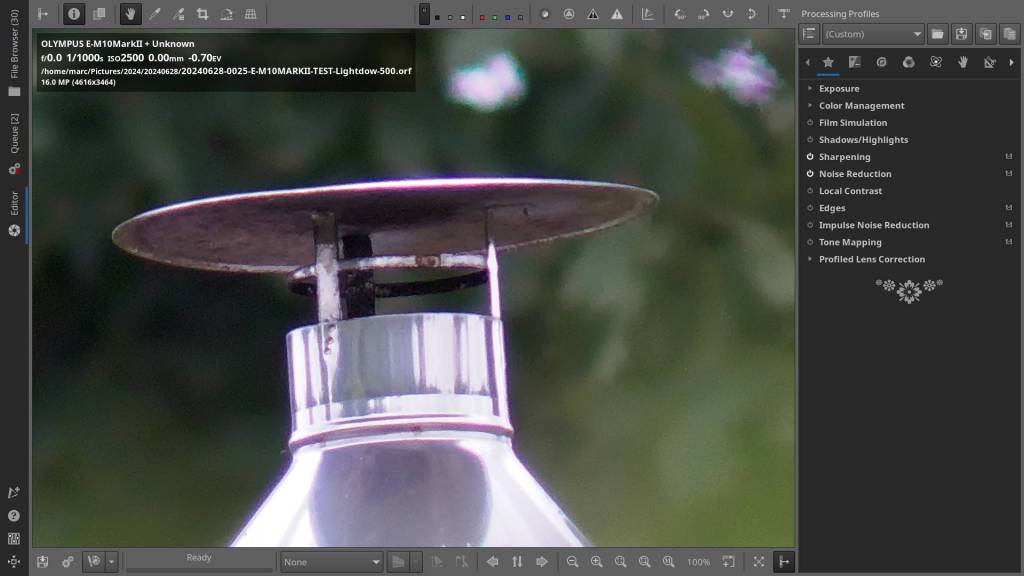
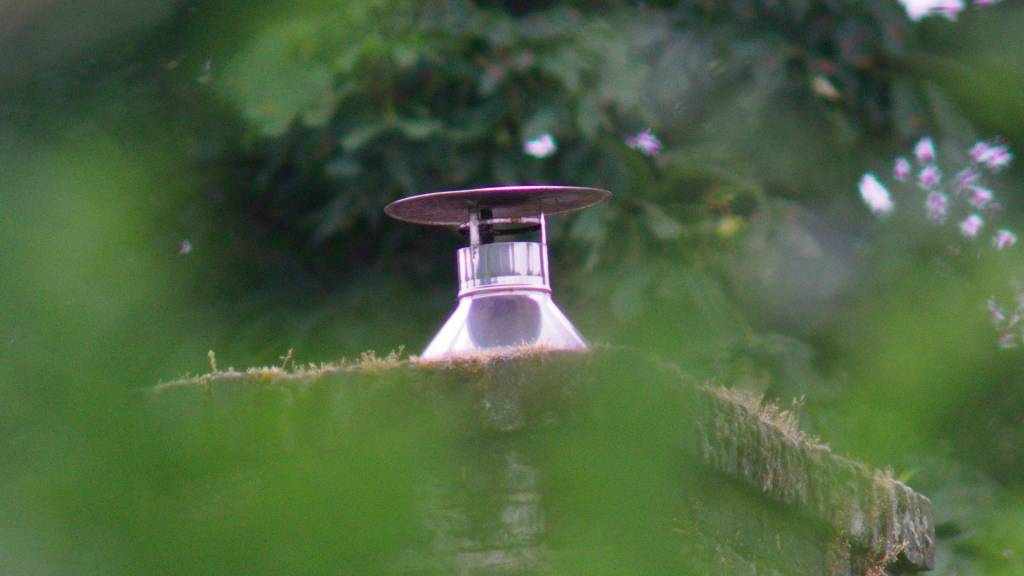
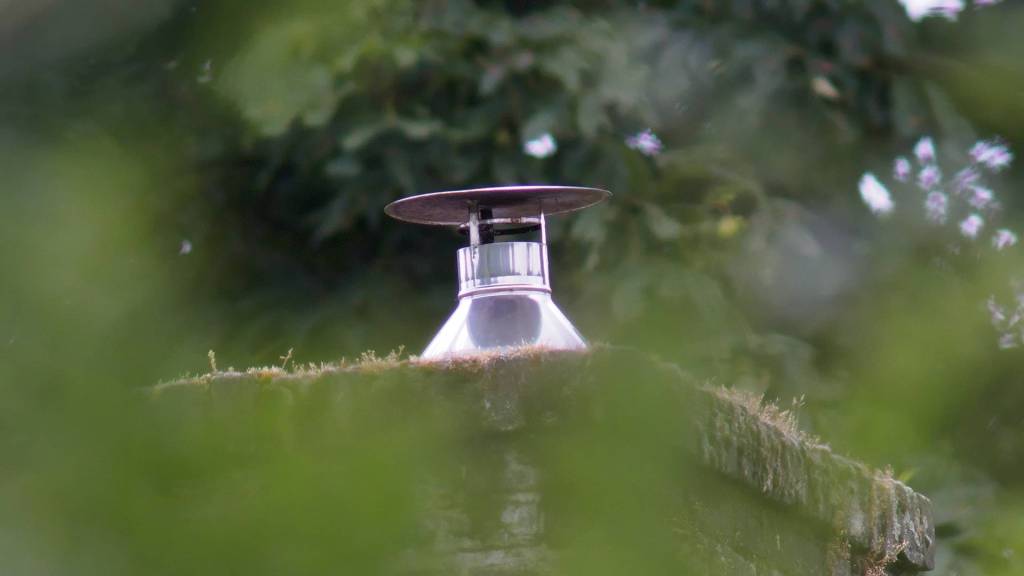
The next day I shot this aircraft high in the sky with the E-M5 MKIII, on the left is the photo with the standard Adobe camera color profile, and on the right is the sharpened and noise-reduced version.
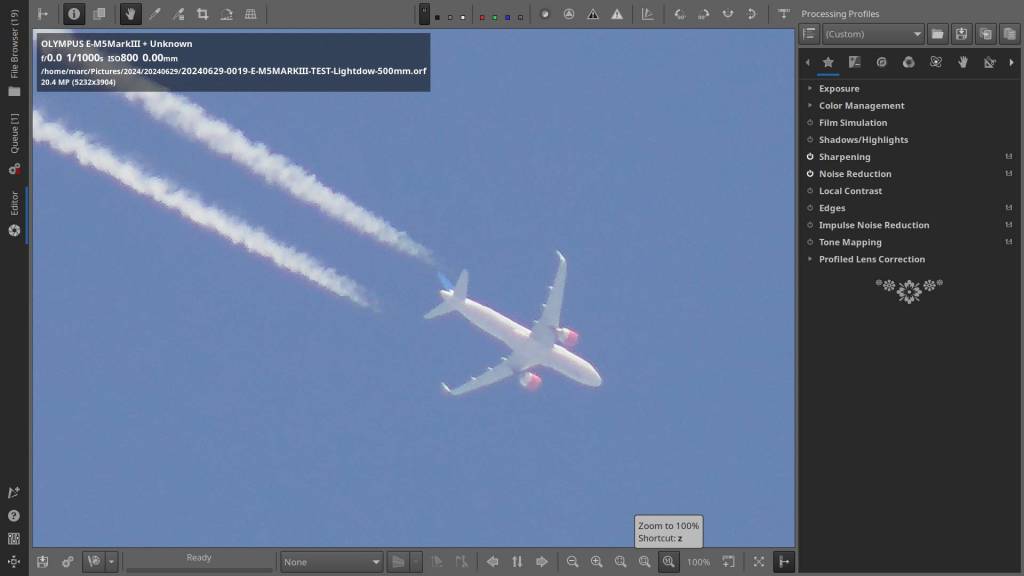
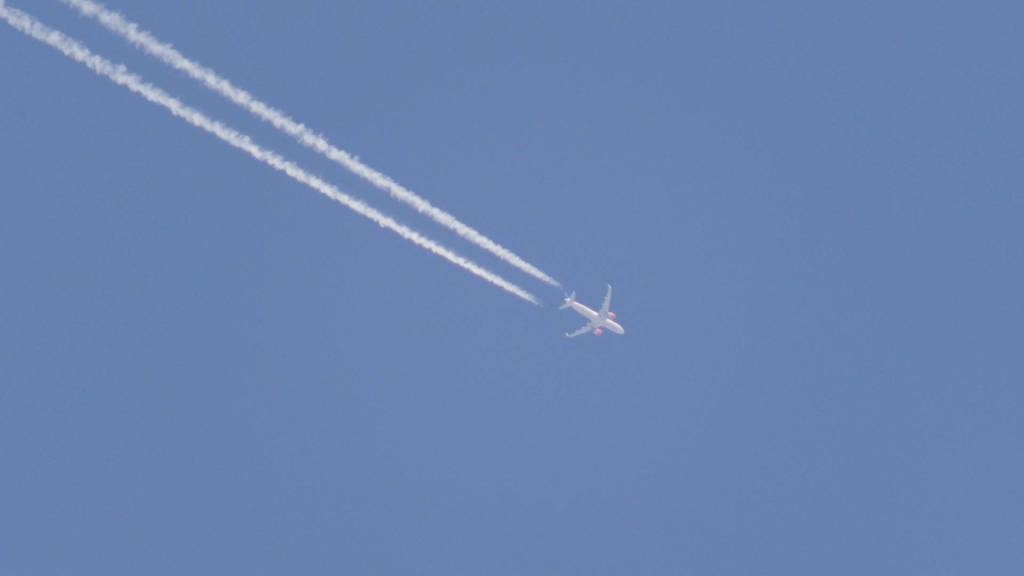
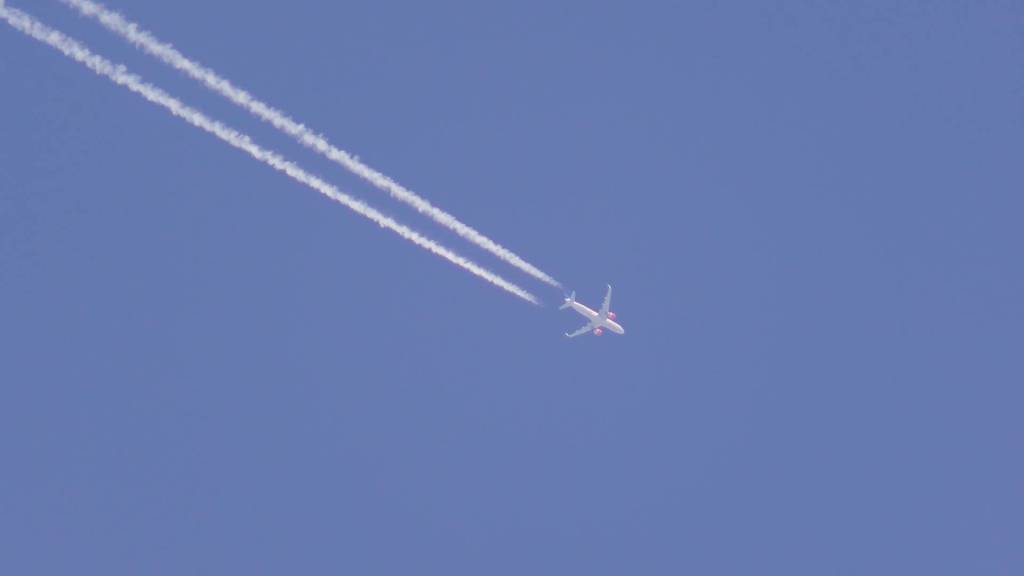
I decided to take my bike out to test the lens in conditions similar to those I’d use with the Leica 100-400mm. I also took a comparison photo with the Leica lens to see how the expensive lens stacks up against the cheaper Lightdow.
Handling: The lens is large but quite lightweight. The entire front barrel can be used for focusing, providing a good grip and stability. Make sure to set the stabilization to 500mm through the super control panel: stabilization -> info -> 500mm. On both cameras, I set the magnify function to the smallest setting and the focus peaking to high with red color, which worked best with this lens.
One issue is the excess grease that can come out of the lens onto the barrel, which can be annoying but is easy to avoid once you’re aware of it. You might also hear a squeaking sound from the grease when focusing.
Test Pictures :



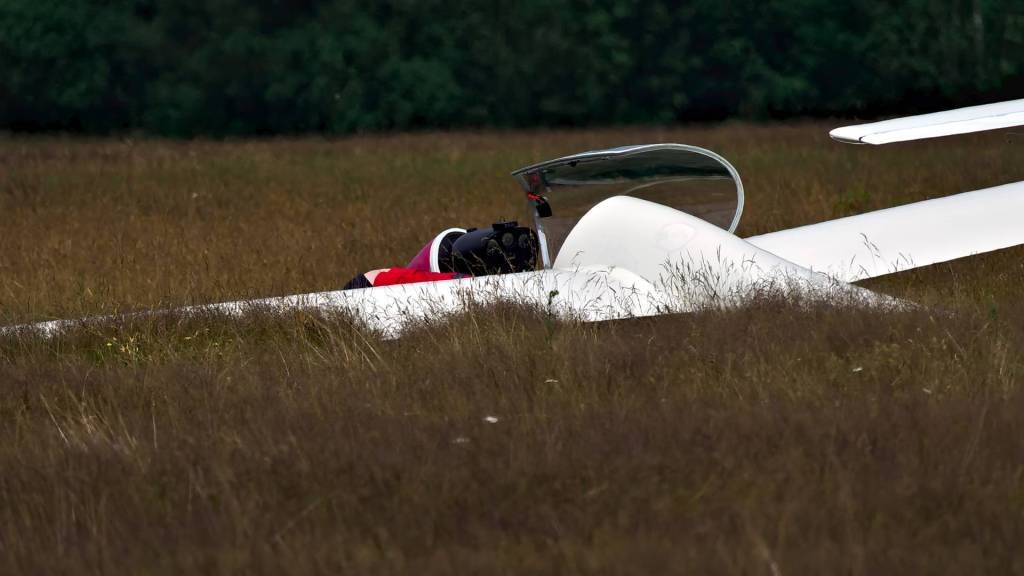
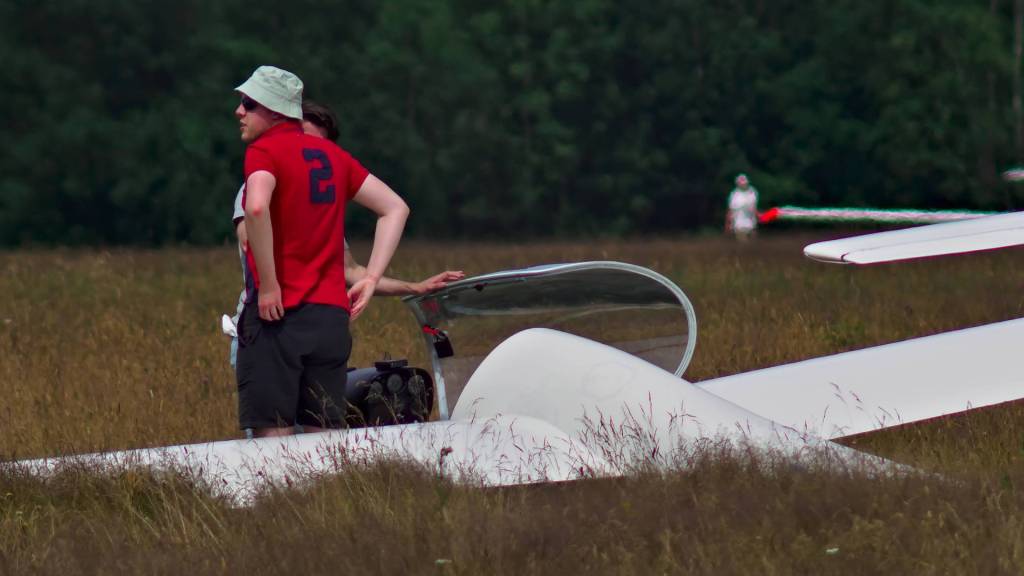
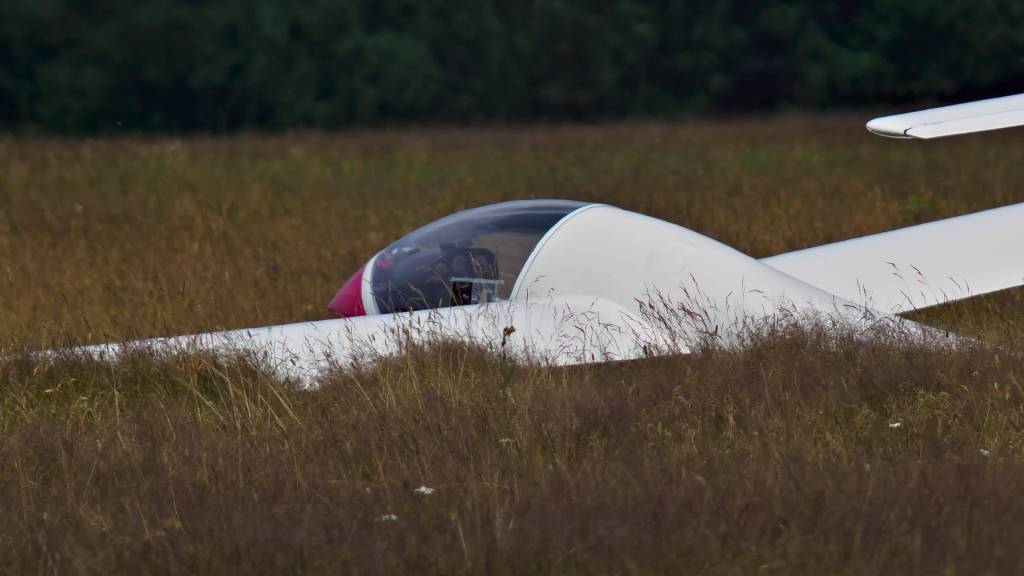
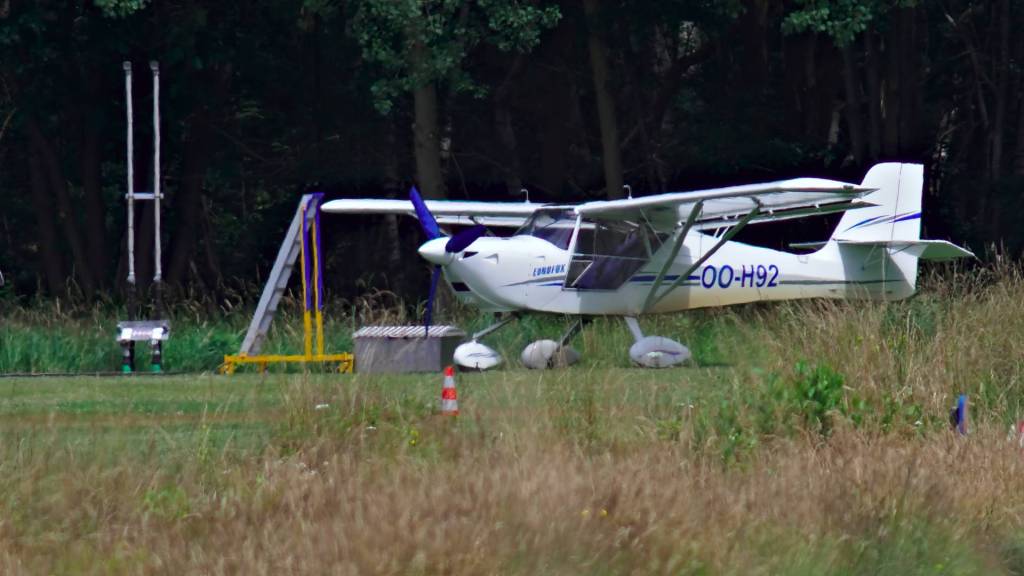
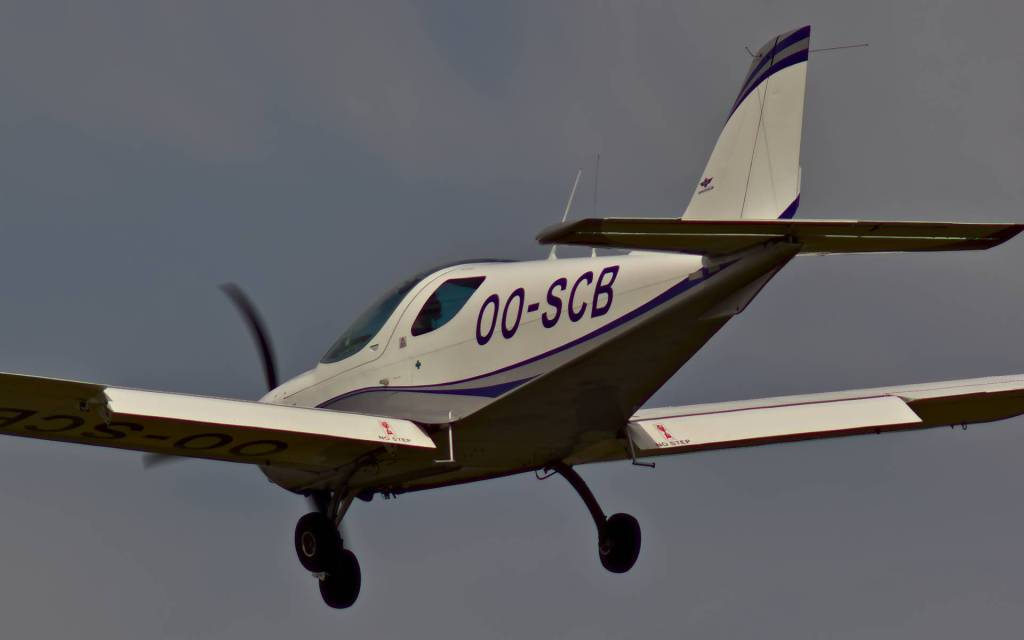
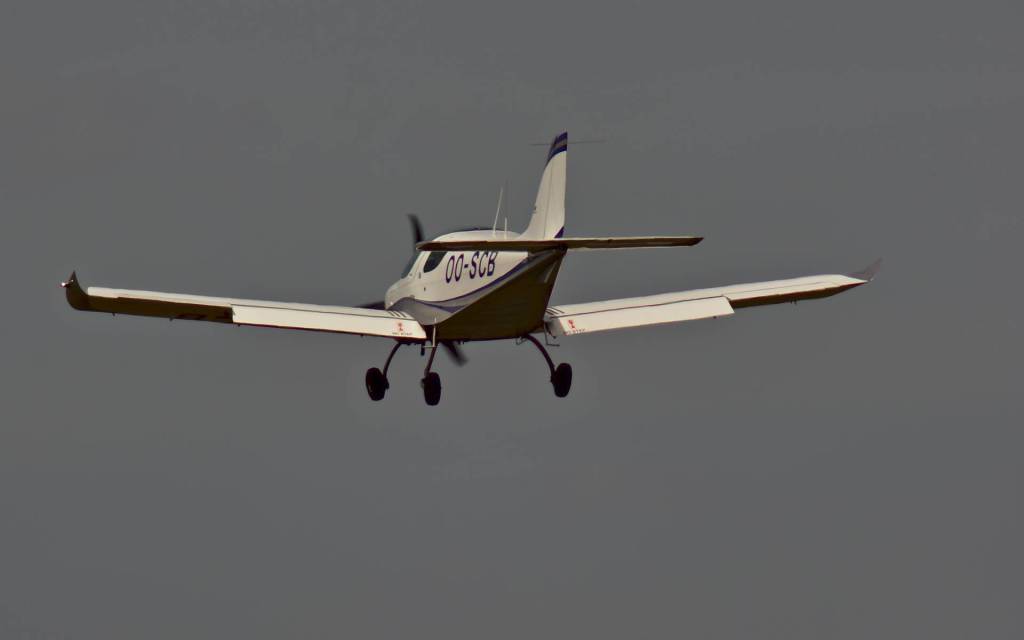
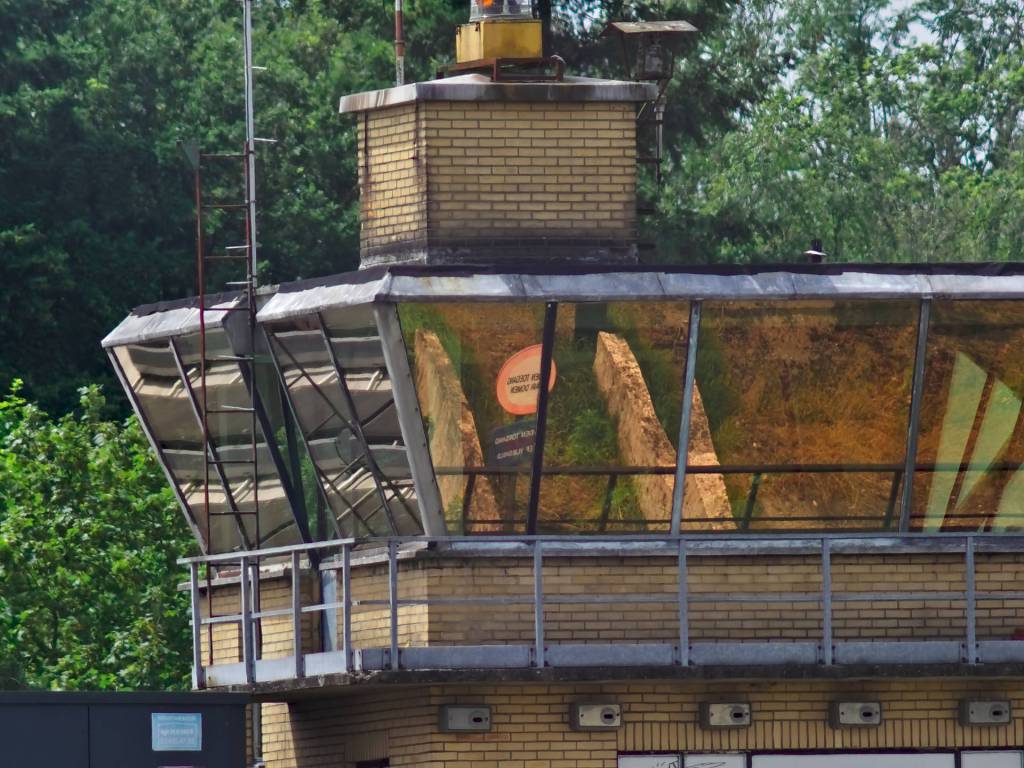
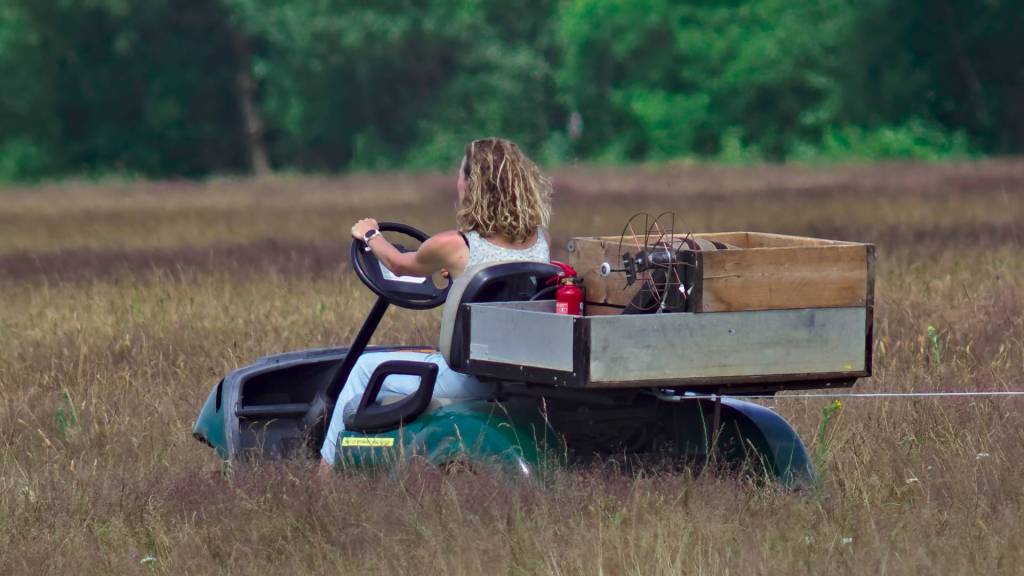
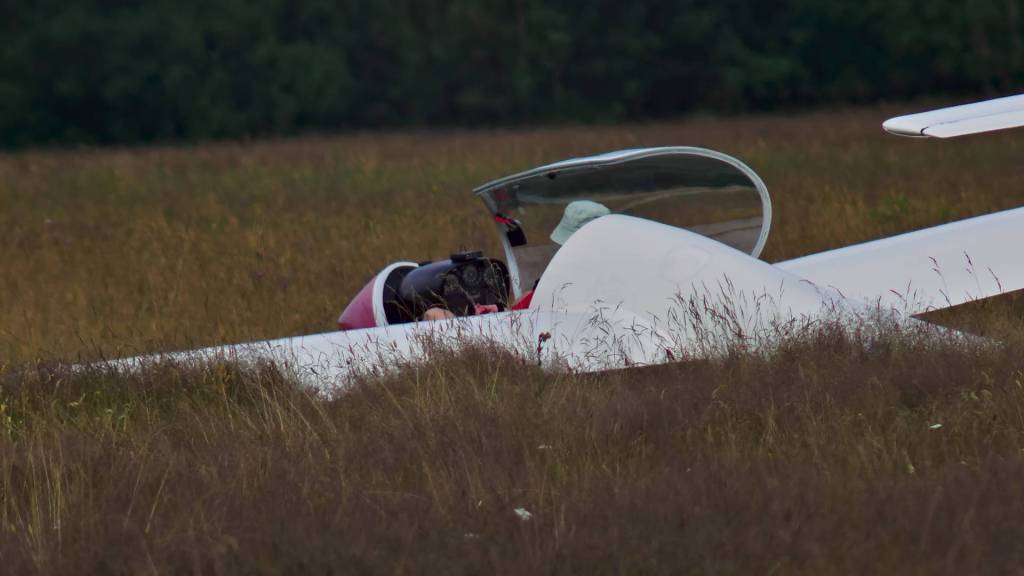
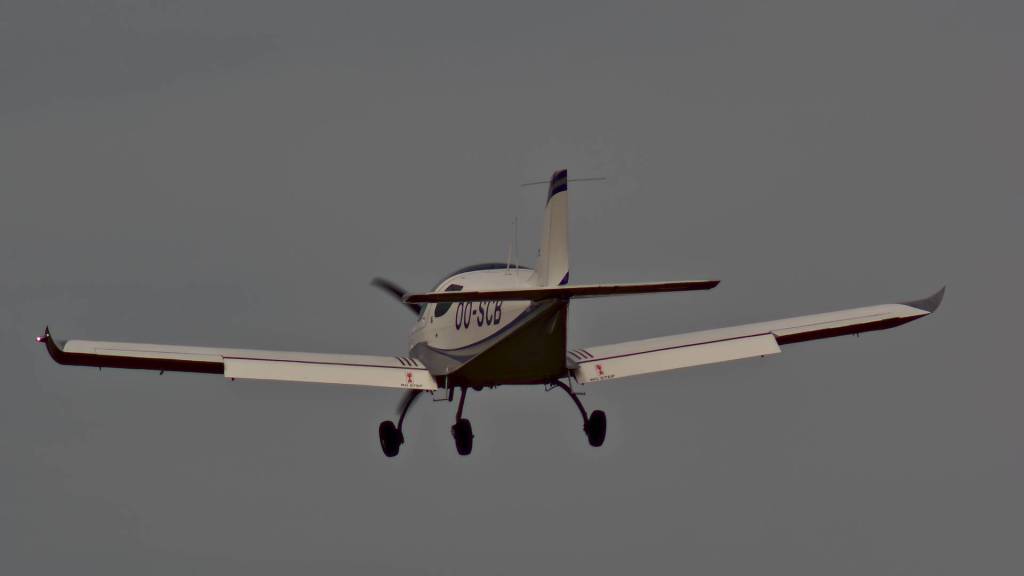
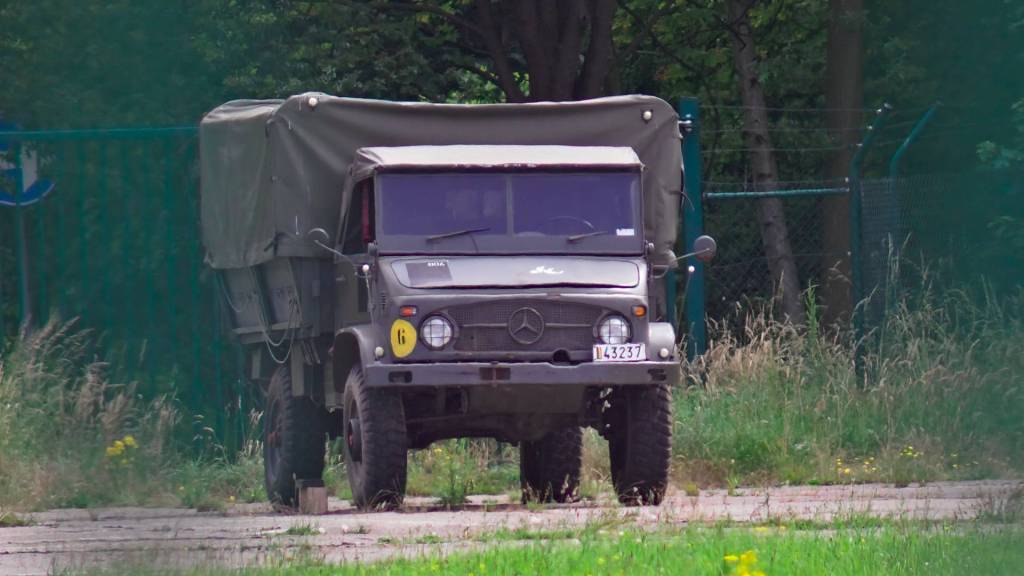
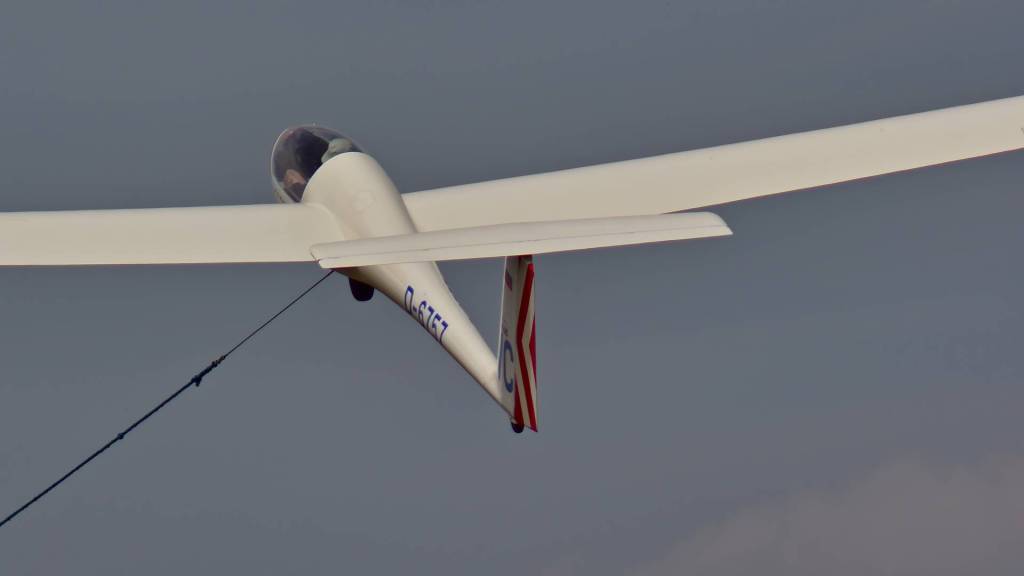
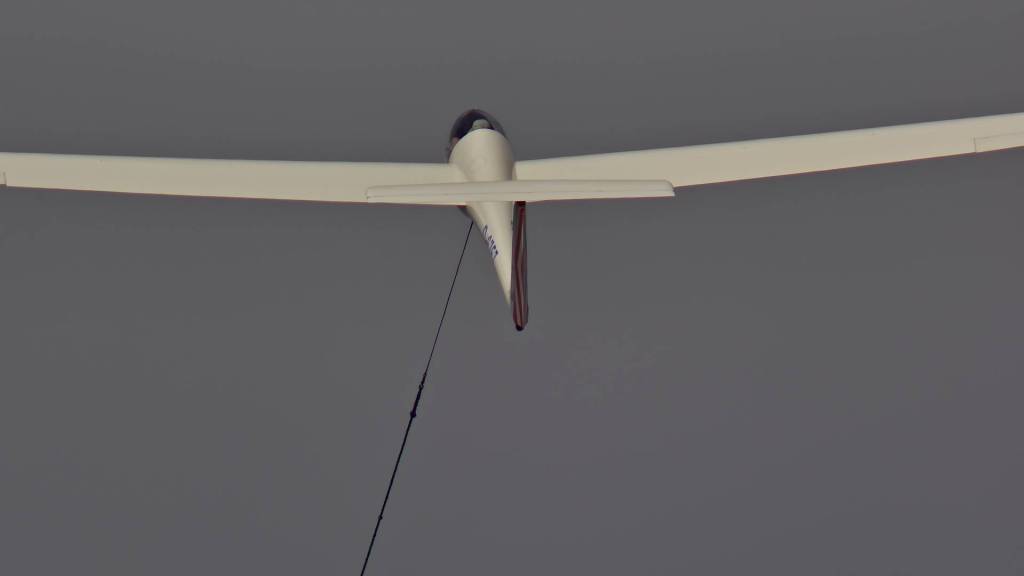
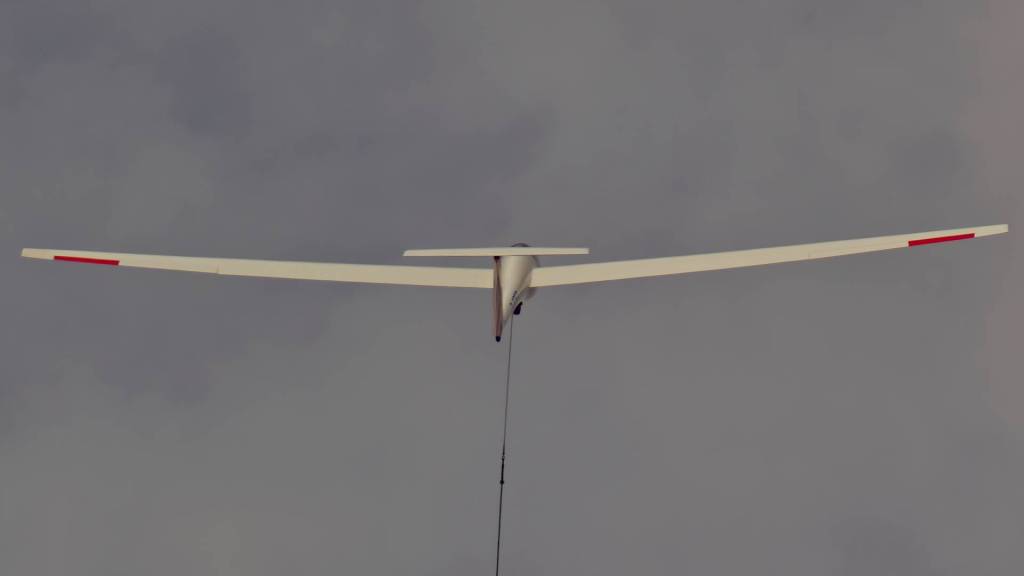
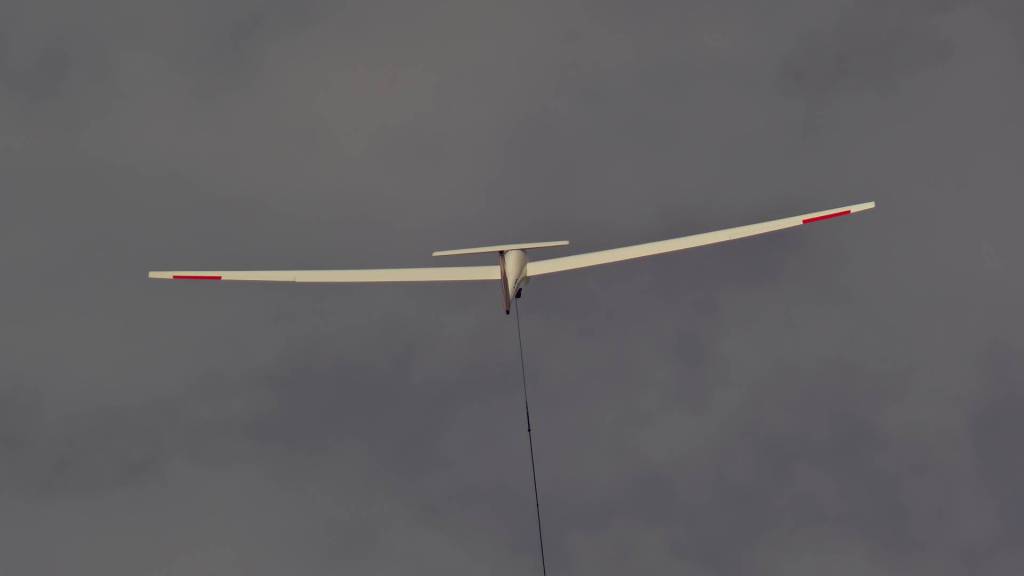
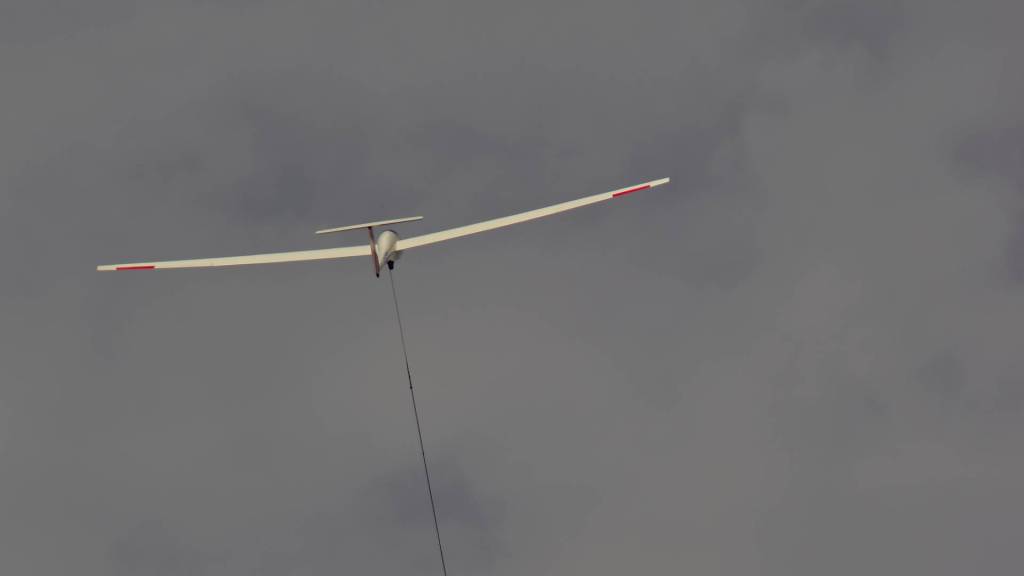
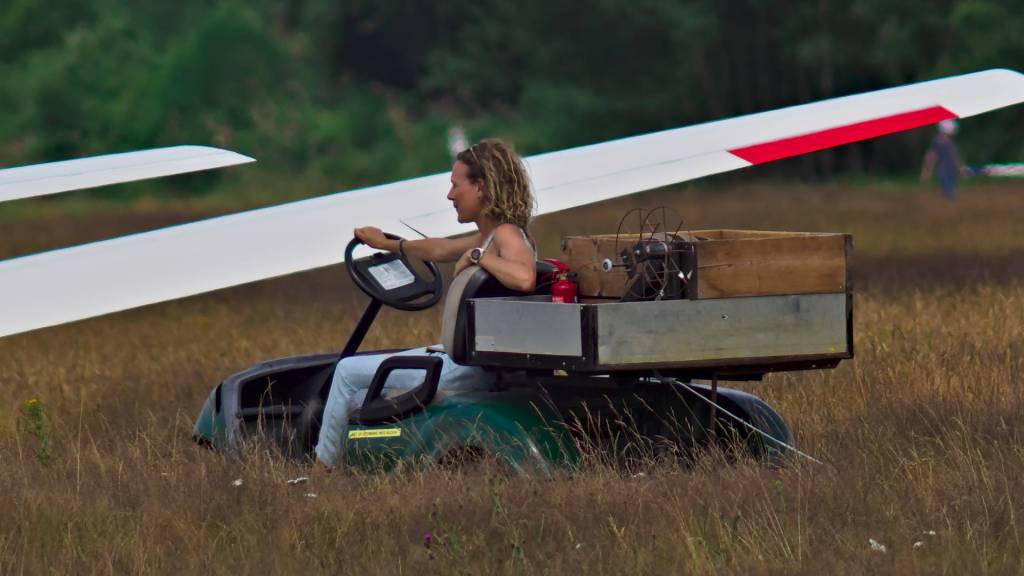
All the photos are shown at their original size. The Herons were photographed from about 50 to 60 meters away, and the airfield photos were taken from 80 to 100 meters or more. Only one photo, the second Heron, has been cropped. I used focus peaking to easily capture the flying airplanes.
Conclusion :
First, let me say that I read a lot of reviews, and it’s often challenging because cheap manual lenses are compared to expensive ones. If you’re looking at an €8000 Olympus 150-400mm lens, high expectations are justified. But don’t expect the same from a €400 TTArtisan 500mm f6.3. Some photographers have very high standards, which is fine, but it’s unfair to expect a cheap manual lens to match an expensive one. The saying “You get what you pay for” fits here, so I prefer to review lenses more fairly, considering various factors.
I enjoyed using the Lightdow 500mm f6.3. Focusing takes more time, but with practice, it gets easier and faster. I took all the pictures wide open at f6.3, with auto ISO and a shutter speed around 1/1000, all handheld—equivalent to 1000mm in 35mm format! For focusing, I found focus peaking more helpful than magnification. With practice, I could get 7 to 8 usable pictures out of 10, even on moving targets. This would be harder with a mirror lens.
Olympus cameras have amazing stabilization. All the photos with the Lightdow were taken with an Olympus E-M5 MKIII. When you focus and half-press the shutter button, the stabilization feels like an invisible hand holding the lens steady—1000mm 35mm equivalent, no lens stabilization, all handheld. Remarkable!
As for lens quality and sharpness, look at the results and decide for yourself. I was genuinely surprised by the quality, which was much better than I expected. There was some purple fringing, but it’s easy to remove in post-processing. It’s not pixel-perfect sharp, but it costs €150, not €1500 or €8000. For my purposes, the test was more than 100% successful, and I won’t be selling the lens. My Leica 100-400mm and Olympus 100-400mm are incomparable better, but they cost 10 times more—are they 10 times better? That’s a good question.
The smaller the subject, the more challenging it is to focus, but it worked well for larger birds like herons and birds of prey. Foxes, deer, and even planes or distant large subjects are perfect subjects too.
Recommended settings:
- Auto ISO: For older Olympus cameras, use up to ISO 6400. With the OM-1, you can go even higher.
- Shutter Priority: Use at least 1/500 for static subjects – and everything that moves a little at least 1/1000
- Focus: Utilize magnification 3x to 5x and/or focus peaking high.
- Aperture: Start with the lens wide open, then stop down to f/8 to f/11 for shooting if possible.
- Other Settings : If you are not skilled in post-processing, only shoot Jpg and want good results, set the denoising filter to standard, the contrast to +1, the sharpness to +1, and the saturation to +1.
Considering its minor shortcomings, I give the lens an 7 out of 10. It’s certainly worth its price.
I’ve already given it a camouflage cover with camo tape, which shows that I have no intention of selling it. No, I’m very happy and it’s really fun to shoot with !
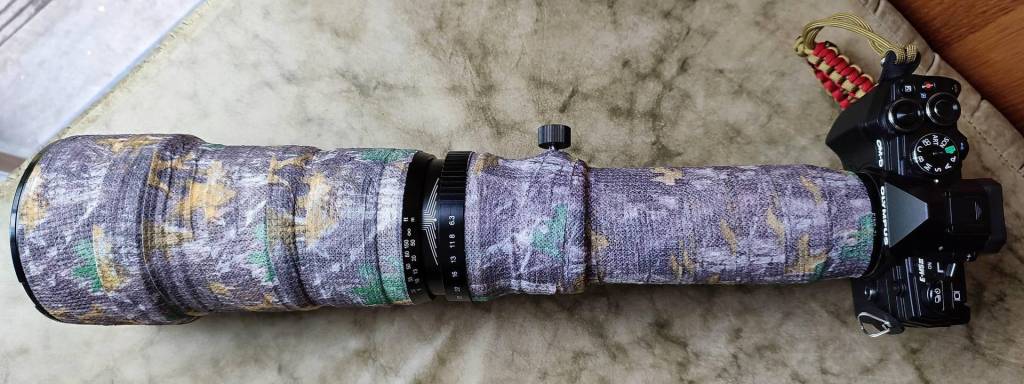
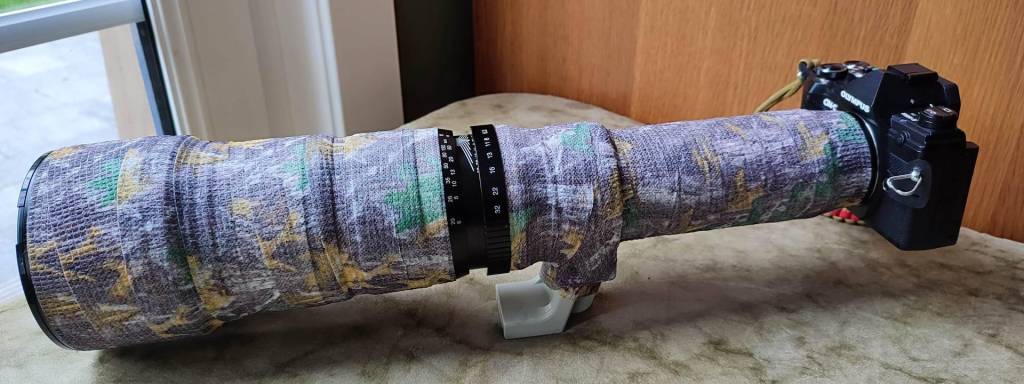
Other telephoto options :
Discover more from Open Source Photography
Subscribe to get the latest posts sent to your email.


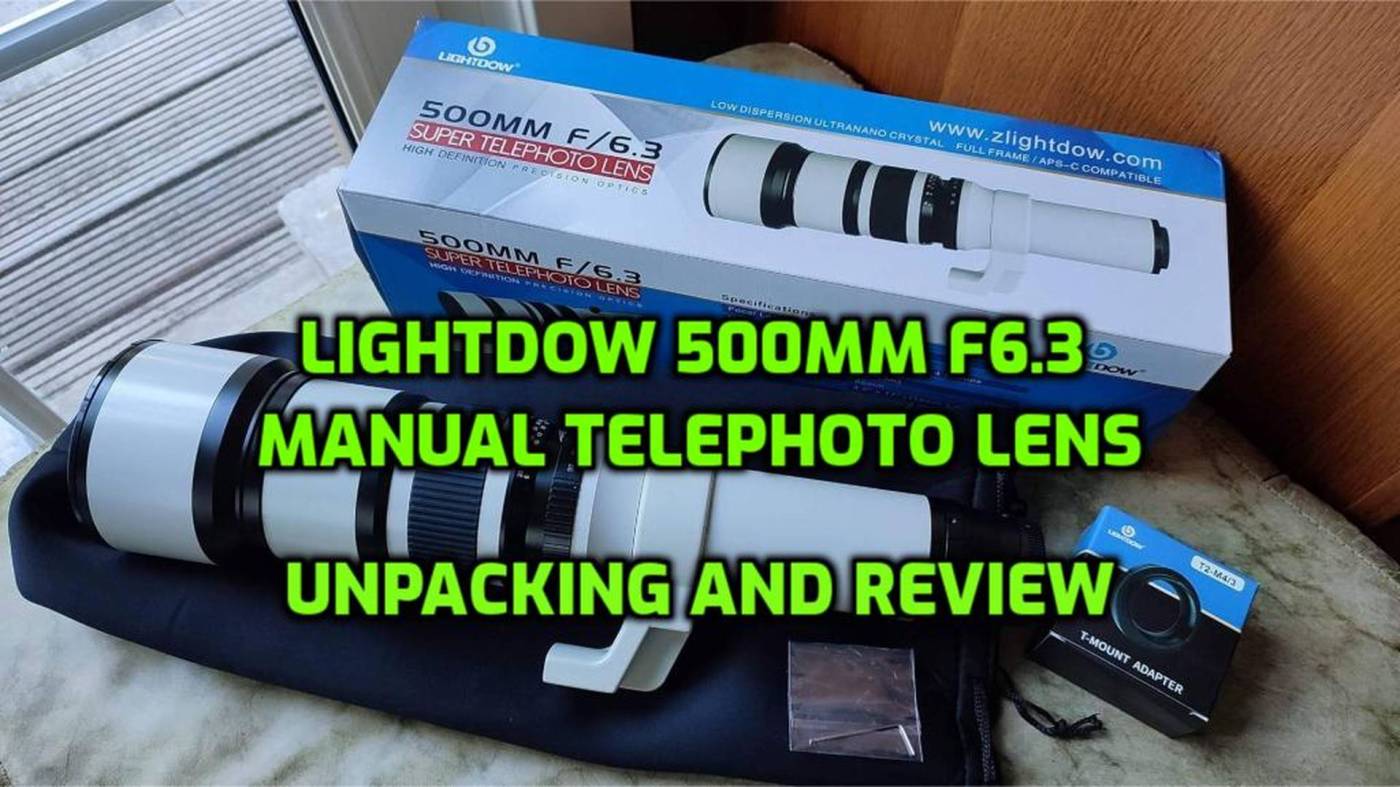

Have fun!
LikeLiked by 1 person
Thanks Harrie !
LikeLike
What a bargain, for that sort of money its a no brainer. Ive been looking around for something over the 200mm mark. Even on the used market they cost way more, nice find Marc.
LikeLike
Hey Ed, your message went to spam and I only found it today. Well, it’s certainly cheap, but big and manual. If you are looking for something over 200mm, the 75-300mm from Olympus and the 100-300mm from Panasonic are good choices. I have the 100-300 Pana myself, and I am very satisfied with the quality it delivers.Cheers !
LikeLiked by 1 person
That is one beast of a lens! Enjoy! Initial results are great!
LikeLiked by 1 person
Thanks Mark, have a great Friday and weekend !
LikeLiked by 1 person
Thanks for the hard work. Always interested to see info like this. Ted
LikeLiked by 1 person
No thanks, Ted. I’m just really curious by nature, and my slightly obsessive perfectionist brain always wants to learn more 🙂 I just hope my articles can help someone. Have a great weekend !
LikeLike
Dear Tomomichi Nakamura,
I hope this message finds you well. Thank you for taking the time to visit my humble website.
I am familiar with the lens you reviewed on your beautiful website, and as you mentioned, it is a design that was highly regarded during the film era. What makes this connection even more meaningful to me is that a modern Chinese telephoto lens led you to my website and, in turn, introduced me to your wonderful work. For that, I am truly grateful.
I have subscribed to your website through the WordPress reader and look forward to exploring your content as soon as I can find some time.
Once again, thank you for your visit.
Best regards,
Marc
LikeLike
Is it really f6.3? I see a baffle directly behind the front lens, which covers the outer part of the lens. The lens then actually only has f8?
LikeLike
Hey Karsten ! That’s an interesting observation, and I get where you’re coming from—seeing an obstruction behind the front element can make it look like the aperture is smaller than advertised. But the actual f-number isn’t based on a visual guess or the physical size of internal components. It’s a calculated value: the focal length divided by the diameter of the effective entrance pupil (as seen from the front).
In the case of the Lightdow 500mm f/6.3, the entrance pupil does indeed match the math—500 ÷ 6.3 ≈ 79mm. That’s what determines the f-stop, regardless of how things might appear through the lens.
As a side note, Lightdow also offers a 500mm f/8 version of this lens. It has a significantly smaller front element and weighs a lot less—so if we follow the same logic, shouldn’t that one be f/10 or more? But again, it’s all about the entrance pupil and how the optics are designed, not just the visible mechanics.
Optics can be deceiving, but the physics behind them is pretty consistent 🕵🏼♂️.
LikeLike